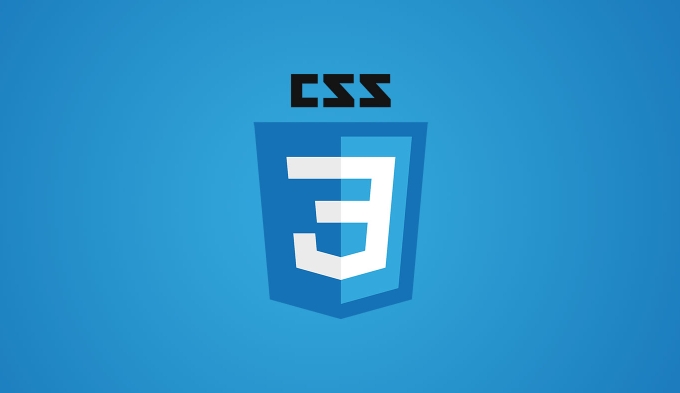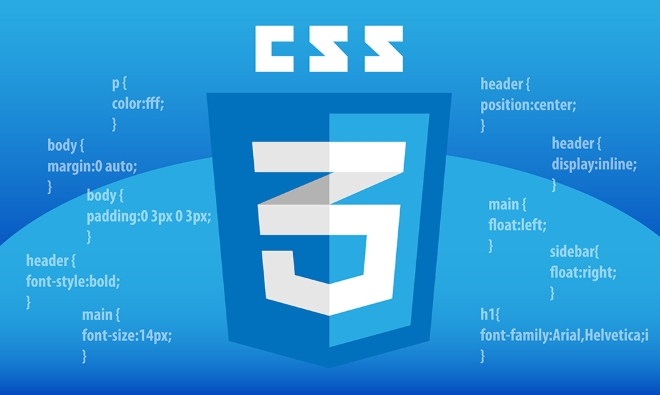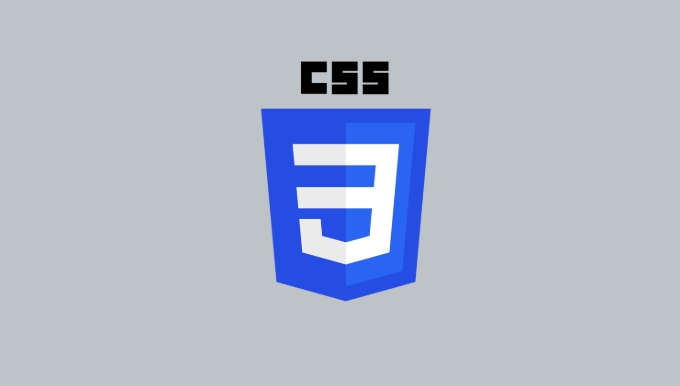clip-path is an attribute in CSS to create shapes and mask effects without pictures or extra HTML elements. 1. It displays part of the element by defining the crop area, commonly used preset shapes such as circle(), ellipse(), inset() and polygon(); 2. Polygons use polygon() function to define complex shapes through coordinate points, suitable for trapezoids, arrows and other designs; 3. SVG paths can be cited to achieve more advanced cropping, and you need to master the path data format; when using actual application, you need to pay attention to compatibility, performance impact, responsive adaptation and debugging difficulty. It is recommended to combine visualization tools to improve efficiency.

To put it directly, the key point: CSS's clip-path property can easily create various shapes and mask effects without relying on images or additional HTML elements.

What is clip-path ?
clip-path is a CSS property that allows you to display part of an element by defining a clipping area. Content beyond this area will be hidden. This feature is very suitable for creating visual effects such as irregular shapes, triangles, polygons, etc.

You can use preset shape functions such as circle() , polygon() or inset() , or reference the SVG path to do more complex cropping. Common uses include making graphic containers, animation masks, or making web pages look more designed.
Common ways to use clip-path
1. Base shape: round, oval, rectangle cut
.element {
clip-path: circle(50% at 50% 50%);
}-
circle(50%)means that the radius is half of the container, and the center point is the middle by default. - If you want to adjust the position, you can use
at xyto specify the center point. For example,circle(30% at 70% 50%)is a small circle that is on the right.
Use ellipse() for ellipse, and use inset() for rectangle cropping:

clip-path: inset(10% 20% 30% 40%);
This means that 10%, 20%, 30%, and 40% are cut out from top, bottom, left and right respectively.
2. Polygons: Customize complex shapes
If you want to make irregular shapes such as trapezoids, pentagrams, arrows, etc., polygon() is the most commonly used tool.
clip-path: polygon(50% 0%, 100% 50%, 50% 100%, 0% 50%);
The above example will generate a diamond. The parameters are coordinate points, which are connected in order to form a closed figure.
Tip: You can use online tools (such as Clippy) to visually generate polygon parameters to avoid manually calculating coordinates.
3. Use SVG path for advanced cropping
If you already have SVG graph path data, you can call it directly in CSS:
clip-path: path('M 0 0 L 100 0 L 50 100 Z');
This method is suitable for very complex shapes, but requires some knowledge of SVG paths.
Things to note in practical applications
- Compatibility : All mainstream browsers support it, but it may not be displayed properly on older IEs.
- Performance Impact : Complex shapes may slightly affect rendering performance, especially for large numbers of elements or animations.
- Responsive problem : If the shape is positioned based on percentage, it can be automatically adapted when the window size changes; but if a fixed pixel value is used, it may need to be adjusted in conjunction with media query.
- Debugging difficulty : When there are too many
polygon()points, it is difficult to see the shape intuitively. It is recommended to use visualization tools to assist.
Conclusion
It is actually not difficult to make shapes and masks with clip-path . The key is to understand the parameters of different functions and master some coordinate logic. Start trying out with simple shapes and slowly transitioning to complex graphics, and you will find that it can bring a lot of interesting visual changes to the page. Basically that's all, let's try it!
The above is the detailed content of Creating shapes and masks with CSS clip-path. For more information, please follow other related articles on the PHP Chinese website!

Hot AI Tools

Undress AI Tool
Undress images for free

Undresser.AI Undress
AI-powered app for creating realistic nude photos

AI Clothes Remover
Online AI tool for removing clothes from photos.

Clothoff.io
AI clothes remover

Video Face Swap
Swap faces in any video effortlessly with our completely free AI face swap tool!

Hot Article

Hot Tools

Notepad++7.3.1
Easy-to-use and free code editor

SublimeText3 Chinese version
Chinese version, very easy to use

Zend Studio 13.0.1
Powerful PHP integrated development environment

Dreamweaver CS6
Visual web development tools

SublimeText3 Mac version
God-level code editing software (SublimeText3)
 CSS tutorial for creating loading spinners and animations
Jul 07, 2025 am 12:07 AM
CSS tutorial for creating loading spinners and animations
Jul 07, 2025 am 12:07 AM
There are three ways to create a CSS loading rotator: 1. Use the basic rotator of borders to achieve simple animation through HTML and CSS; 2. Use a custom rotator of multiple points to achieve the jump effect through different delay times; 3. Add a rotator in the button and switch classes through JavaScript to display the loading status. Each approach emphasizes the importance of design details such as color, size, accessibility and performance optimization to enhance the user experience.
 Addressing CSS Browser Compatibility issues and prefixes
Jul 07, 2025 am 01:44 AM
Addressing CSS Browser Compatibility issues and prefixes
Jul 07, 2025 am 01:44 AM
To deal with CSS browser compatibility and prefix issues, you need to understand the differences in browser support and use vendor prefixes reasonably. 1. Understand common problems such as Flexbox and Grid support, position:sticky invalid, and animation performance is different; 2. Check CanIuse confirmation feature support status; 3. Correctly use -webkit-, -moz-, -ms-, -o- and other manufacturer prefixes; 4. It is recommended to use Autoprefixer to automatically add prefixes; 5. Install PostCSS and configure browserslist to specify the target browser; 6. Automatically handle compatibility during construction; 7. Modernizr detection features can be used for old projects; 8. No need to pursue consistency of all browsers,
 What is the difference between display: inline, display: block, and display: inline-block?
Jul 11, 2025 am 03:25 AM
What is the difference between display: inline, display: block, and display: inline-block?
Jul 11, 2025 am 03:25 AM
Themaindifferencesbetweendisplay:inline,block,andinline-blockinHTML/CSSarelayoutbehavior,spaceusage,andstylingcontrol.1.Inlineelementsflowwithtext,don’tstartonnewlines,ignorewidth/height,andonlyapplyhorizontalpadding/margins—idealforinlinetextstyling
 Creating custom shapes with css clip-path
Jul 09, 2025 am 01:29 AM
Creating custom shapes with css clip-path
Jul 09, 2025 am 01:29 AM
Use the clip-path attribute of CSS to crop elements into custom shapes, such as triangles, circular notches, polygons, etc., without relying on pictures or SVGs. Its advantages include: 1. Supports a variety of basic shapes such as circle, ellipse, polygon, etc.; 2. Responsive adjustment and adaptable to mobile terminals; 3. Easy to animation, and can be combined with hover or JavaScript to achieve dynamic effects; 4. It does not affect the layout flow, and only crops the display area. Common usages are such as circular clip-path:circle (50pxatcenter) and triangle clip-path:polygon (50%0%, 100 0%, 0 0%). Notice
 Styling visited links differently with CSS
Jul 11, 2025 am 03:26 AM
Styling visited links differently with CSS
Jul 11, 2025 am 03:26 AM
Setting the style of links you have visited can improve the user experience, especially in content-intensive websites to help users navigate better. 1. Use CSS's: visited pseudo-class to define the style of the visited link, such as color changes; 2. Note that the browser only allows modification of some attributes due to privacy restrictions; 3. The color selection should be coordinated with the overall style to avoid abruptness; 4. The mobile terminal may not display this effect, and it is recommended to combine it with other visual prompts such as icon auxiliary logos.
 How to create responsive images using CSS?
Jul 15, 2025 am 01:10 AM
How to create responsive images using CSS?
Jul 15, 2025 am 01:10 AM
To create responsive images using CSS, it can be mainly achieved through the following methods: 1. Use max-width:100% and height:auto to allow the image to adapt to the container width while maintaining the proportion; 2. Use HTML's srcset and sizes attributes to intelligently load the image sources adapted to different screens; 3. Use object-fit and object-position to control image cropping and focus display. Together, these methods ensure that the images are presented clearly and beautifully on different devices.
 Demystifying CSS Units: px, em, rem, vw, vh comparisons
Jul 08, 2025 am 02:16 AM
Demystifying CSS Units: px, em, rem, vw, vh comparisons
Jul 08, 2025 am 02:16 AM
The choice of CSS units depends on design requirements and responsive requirements. 1.px is used for fixed size, suitable for precise control but lack of elasticity; 2.em is a relative unit, which is easily caused by the influence of the parent element, while rem is more stable based on the root element and is suitable for global scaling; 3.vw/vh is based on the viewport size, suitable for responsive design, but attention should be paid to the performance under extreme screens; 4. When choosing, it should be determined based on whether responsive adjustments, element hierarchy relationships and viewport dependence. Reasonable use can improve layout flexibility and maintenance.
 What are common CSS browser inconsistencies?
Jul 26, 2025 am 07:04 AM
What are common CSS browser inconsistencies?
Jul 26, 2025 am 07:04 AM
Different browsers have differences in CSS parsing, resulting in inconsistent display effects, mainly including the default style difference, box model calculation method, Flexbox and Grid layout support level, and inconsistent behavior of certain CSS attributes. 1. The default style processing is inconsistent. The solution is to use CSSReset or Normalize.css to unify the initial style; 2. The box model calculation method of the old version of IE is different. It is recommended to use box-sizing:border-box in a unified manner; 3. Flexbox and Grid perform differently in edge cases or in old versions. More tests and use Autoprefixer; 4. Some CSS attribute behaviors are inconsistent. CanIuse must be consulted and downgraded.






